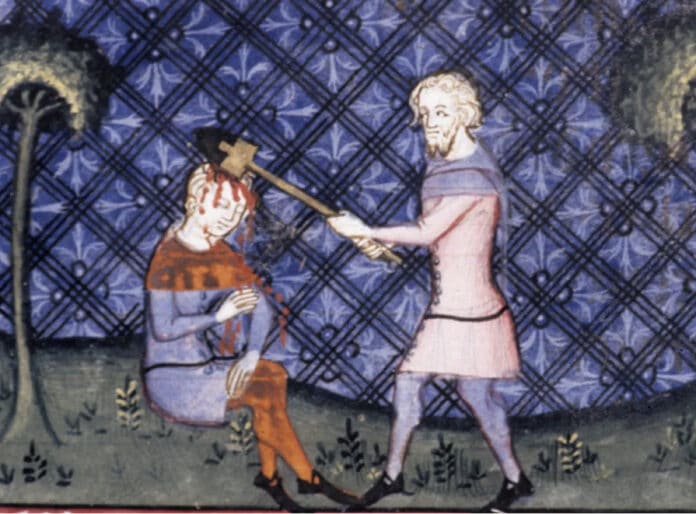Research has uncovered that during medieval times, Oxford earned a grim reputation as one of England’s murder hotspots, with numerous violent incidents involving individuals living under perilous circumstances, often perpetrated by students.
According to a study conducted by the University of Cambridge, a rival to Oxford’s academic prestige, the university town witnessed a staggering four to five times more murders compared to London and York during the same era. Based on ancient coroners’ inquests dating back 700 years, it is estimated that late medieval Oxford had a homicide rate ranging from 60 to 75 per 100,000 people—50 times higher than the current rates in 21st-century English cities.
Researchers attribute this high level of violence to a volatile combination of young male students and alcohol, characterising it as a “powder keg” waiting to explode. Notably, 75% of the known offenders were identified by coroners as “clericus,” signifying students or staff associated with the university. In addition, clericus individuals comprised 72% of Oxford’s homicide victims, as revealed by the team behind the Cambridge project known as Medieval Murder Maps.
The research findings indicate that among the three cities studied, Oxford’s student population emerged as “by far the most lethally violent social or professional group.” Professor Manuel Eisner, director of Cambridge’s Institute of Criminology, explained, “A medieval university city such as Oxford had a deadly mix of conditions. Oxford students were all male and typically aged between 14 and 21, the peak for violence and risk-taking. These were young men freed from tight controls of family, parish, or guild and thrust into an environment full of weapons, with ample access to alehouses and sex workers.” He added that conflicts between town and gown, along with the existence of regional fraternities known as ‘nations’ among students, further fueled the violence.
During the early 14th century, Oxford had a population of approximately 7,000 residents, with around 1,500 students. An infamous incident in 1298 involved a heated dispute between students in a tavern on Oxford High Street, resulting in a “mass street brawl with swords and battle axes,” as recounted by researchers. One student, John Burel, suffered a fatal wound to the head, recorded by the coroner as “six inches long and in depth, reaching to the brain.”
The research also highlights the tragic outcomes of interactions between students and sex workers. It was discovered that such encounters could turn violent, with one scholar escaping justice after murdering Margery de Hereford in 1299 following a fatal stabbing instead of settling his debt for intercourse.
The responsibility of reporting crimes before the advent of modern policing often fell to women, who were expected to “raise a hue and cry” to alert the community. Dr. Stephanie Brown noted that this practice was predominantly carried out by women, who would report conflicts between men in order to maintain peace in the community.
If you would like your interests… published, submit via https://dorseteye.com/submit-a-report/
Join us in helping to bring reality and decency back by SUBSCRIBING to our Youtube channel: https://www.youtube.com/channel/UCQ1Ll1ylCg8U19AhNl-NoTg and SUPPORTING US where you can: Award Winning Independent Citizen Media Needs Your Help. PLEASE SUPPORT US FOR JUST £2 A MONTH https://dorseteye.com/donate/







